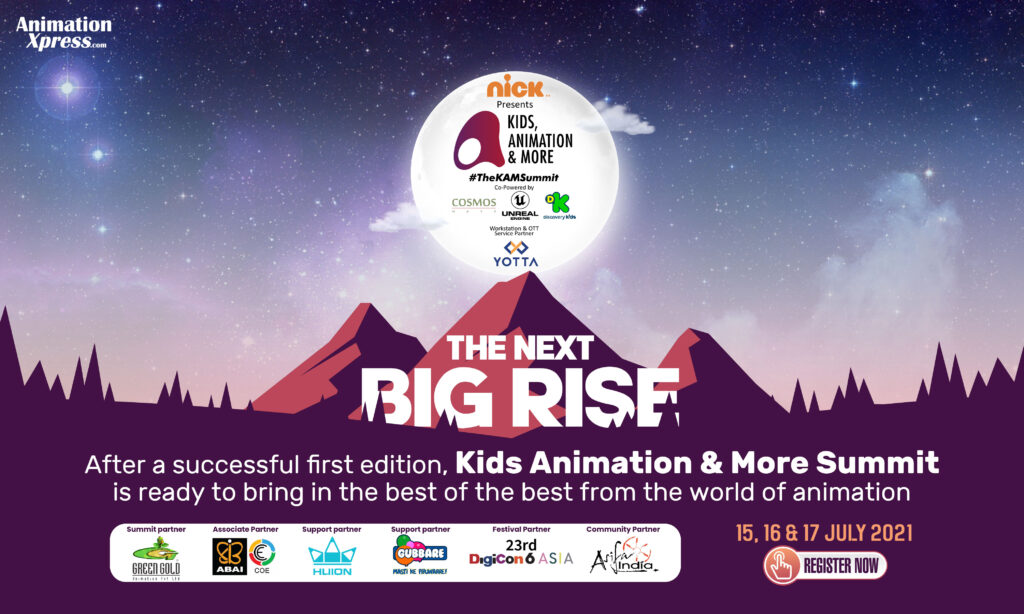
KAM summit saw a definitive masterclass by Gaumont pipeline architect – supervising technical director Esan Mandal in which he shared insights on significance, application and the usefulness of an animation pipeline. With animation industry on the rise, many new channels have sprung up to cater to the demand with oodles and oodles of new animated content. The need for establishing a proper pipeline system to streamlines the content production cycle.
He shared, “The goal of an animation pipeline is to create animation content efficiency. Production can be split into three parts; pre-production, production and post-production.”
In animation, he notes, the industry is producing tons of data; maybe in the range of hundreds of terabytes.
He explained, “A pipeline lets you manage that data and scale. It implements production process and policies so that you don’t have to rely on people’s memories.”
To see how to build a pipeline, he suggests one needs to make a note of the very high-level dependencies of a pipeline, the philosophies to adopt and the strategies that addresses those philosophies and the components that can help implement those strategies and the methodology for the pipeline development process.
He further enlists, “Size of the studio, the type of work you are planning to do at the studio and the location of the crew are the key factors that will have the most impact on your pipeline decisions and you should evaluate them to understand the high-level impact.”
He explains, “Future-poof your pipeline by making sure it enables the long-term goals of the studio. Increase the quality of your product by reducing errors and strict quality control practices as enforced by the pipeline. Increase efficiency and productivity and most importantly, make the lives of the crew easier.”
“Without a doubt, the most important goal is the make the crew’s life easier. The three strategies to bring more convenience to the process. Creation in context, consistent user experience and user interface and production tracking,” he shared.
Speaking about the importance of creating in context, he shares, “Artists work in context of other departments; for example, modelers model in context of the camera and the set where they exist. Working in context helps make better creative decisions if layout can render with the lighting rig, they can do camera composition that takes into account light and shadows. The sooner the artists can see their work in full context, the better it is from the point of view of creativity and optimisation. The pipeline has allow the assets from downstream departments or any department to be available for upstream departments. Rendering pipeline should allow rendering from all the latest workflows from all the departments.”
Highlighting the importance of user interface, he shares, “Across all departments and tools in the pipeline makes it intuitive for artists to learn new workflows and de-bug existing ones. A pipeline should use identical workflows, icons and UI themes for doing the exact same task in different departments so use common frameworks across departments makes it easier to standardise it across the pipelines.”
Explaining why production tracking is important, he noted, “Production tracking must be made as automated as possible and it should be made available immediately. This can be achieved via use of triggered notifications and update in key stages in the pipeline. The publishing framework will interface with the tracking database to keep everything in synch.”
You can watch the entire presentation on AnimationXpress’ Youtube channel and Facebook page.

